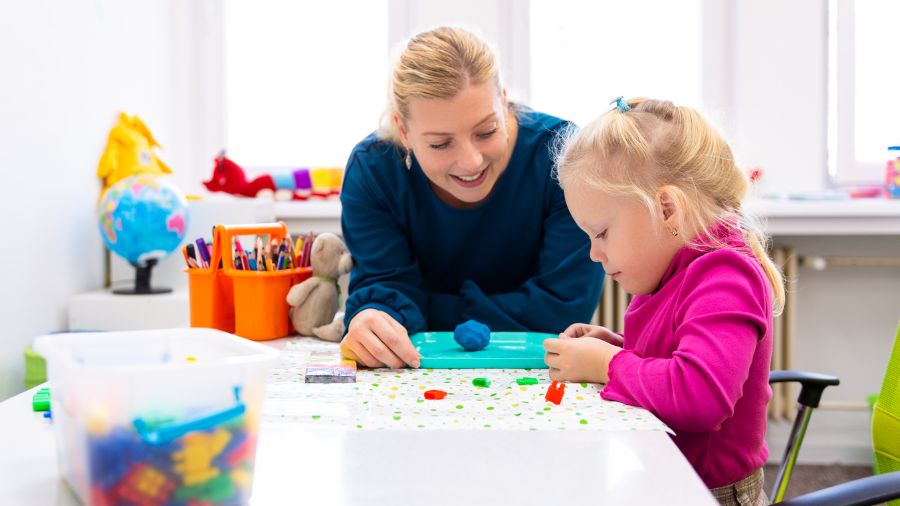I know how much we want our kids to thrive and grow, especially when it comes to those little motor skills and coordination. If you’ve got a little one who could use a bit of extra help in this area, let me share a little gem with you: Occupational Therapy Activities using everyday household items. Yep, the stuff you already have at home!

Using everyday household items during occupational therapy preparatory activities for kids can establish a stimulating and healing atmosphere at home. Imagine turning regular chores and playtime into fun, therapeutic exercises. By using common items like kitchen utensils, sponges, and spray bottles, you can create a playful atmosphere that helps your child develop important skills while having a blast. It’s like turning therapy into a game that blends seamlessly with your daily routine.
This approach is all about making therapy less intimidating and more engaging for your kids. For instance, your child can practice their tripod grasp by painting with a small sponge or improving their fine motor control by threading pipe cleaners through rings. These simple activities use everyday items to target specific skills, making therapy accessible and effective without feeling like a chore.
So, next time you’re tidying up or cooking, think about how you can turn those moments into opportunities for growth and confidence-building. And remember, while these tips are super handy, always consult with a medical professional for personalized advice.
Contents
Key Takeaways
- Everyday items can be essential tools for occupational therapy.
- Use everyday household items to help your little ones build fine motor skills and coordination.
- Explore guides for more ideas on integrating therapy into daily life.
Fundamentals of Occupational Therapy Using Household Items
Using everyday household items in occupational therapy can be highly effective. These items help develop fine motor skills, gross motor skills, sensory processing, and coordination in children.
Understanding Occupational Therapy
Occupational therapy is all about helping people, especially kids, develop or regain the skills they need for everyday life. This can mean doing all sorts of activities to boost fine motor skills, coordination, and sensory processing. Therapists often step in through early intervention programs to help kids who might be experiencing developmental delays. What’s really cool is that simple household items can be used in creative ways to reach these therapy goals, making the activities both fun and effective.
Identifying Suitable Household Items
Finding the right household items for therapy is key. Things like balls, cotton balls, rubber bands, and clothespins can work wonders for improving fine motor skills and coordination. For example, popsicle sticks and toothpicks are great for boosting hand-eye coordination and motor planning. Plus, everyday items like containers, tape, chalk, and paint can be perfect for sensory activities to enhance sensory processing skills. It’s amazing how these simple things around the house can become powerful tools for therapy!
Examples of Suitable Items:
- Balls: To develop gross motor skills and coordination
- String: For practicing bilateral coordination
- Containers: For sensory activities involving filling and emptying
- Straws: To improve fine motor skills through threading activities
- Toys: Used to mimic real-life scenarios and improve motor planning
Integrating Everyday Items into Therapy
Integrating everyday household items into therapy sessions involves creating activities that are both engaging and purposeful. An occupational therapist might use tape on the floor to create boundaries for balance exercises, enhancing core strength and balance.
Using markers and pencils for drawing can improve fine motor control and tripod grasp. Simple tasks like using clothespins to pinch and release can promote hand strength and coordination. Activities like stringing cotton balls onto a string or picking up small objects with toothpicks can refine fine motor skills and bilateral coordination.
Example Activities:
- Painting with sponges for fine motor skills
- Threading straws to enhance eye-hand coordination
- Tape maze on the floor for balance and motor planning
By using these everyday items, therapy can be easily conducted at home or in a clinical setting, providing flexibility and versatility in therapeutic interventions.
Activity Guides by Skill Development Focus
Focusing on specific skill development areas can maximize the effectiveness of occupational therapy activities using everyday household items. This guide covers fine motor skills enhancement, cognitive and sensory activities, and gross motor and coordination exercises.
Fine Motor Skill Enhancement
Fine motor activities target small muscle movements in the hands and fingers, crucial for tasks like cutting, writing, and coloring.
- Sorting and Stringing: Have children string beads or cereal onto yarn, enhancing dexterity and hand-eye coordination.
- Pinching and Tweezing: Use tweezers to pick up small objects like noodles or coins, reinforcing the thumb web space and fine motor precision. Engaging in these tasks regularly benefits overall hand strength and coordination.
Cognitive and Sensory Activities
Cognitive and sensory activities assist with memory, strategy, and sensory processing skills. Sensory bins filled with varied textures like rice, beans, and sand improve sensory discrimination.
- Memory and Strategy Games: Create a homemade scavenger hunt to enhance visual scanning and memory skills. Mark items with painters tape and ask children to find and match these within a set time.
- Sensory Play: Incorporate sensory bins with different items, such as water beads or shaving cream, to engage tactile senses. This type of play is especially beneficial for children with autism or sensory processing issues.
Gross Motor and Coordination Exercises
Gross motor activities enhance large muscle movements necessary for balance and coordination. Simple exercises can significantly improve overall physical capabilities.
- Walking and Running: Organize obstacle courses with household items, promoting balance and various movements. Use a tennis ball for throwing and catching exercises to improve coordination.
- Balance Exercises: Use painter’s tape on the floor to create balance beams or weaving paths to encourage controlled and purposeful movements. This practice supports trunk stability and gross motor skills.
- Visual Motor Skills: Activities such as a ball toss into a basket work on hand-eye coordination and visual scanning. These exercises can be easily integrated into daily routines to maintain engagement.
Integrating these specific activities into therapy sessions ensures a comprehensive approach to skill development using items available at home.

For more homeschooling inspiration, tips and encouragement, make sure to follow KFH on Facebook, Pinterest, Instagram and Twitter, and subscribe to our Newsletter for some FREE GOODIES!
Forest Rose is a God Loving, Blessed Wife, & Mama to 3 girls. She’s passionate about lifting moms out of the trenches that are discouraged, overwhelmed, or feeling alone or isolated. Her hope is to point them to Christ and equip them to rise up with a newfound hope and joy within, that He alone can provide. Besides blogging, she also loves to create printables!



Leave a Reply